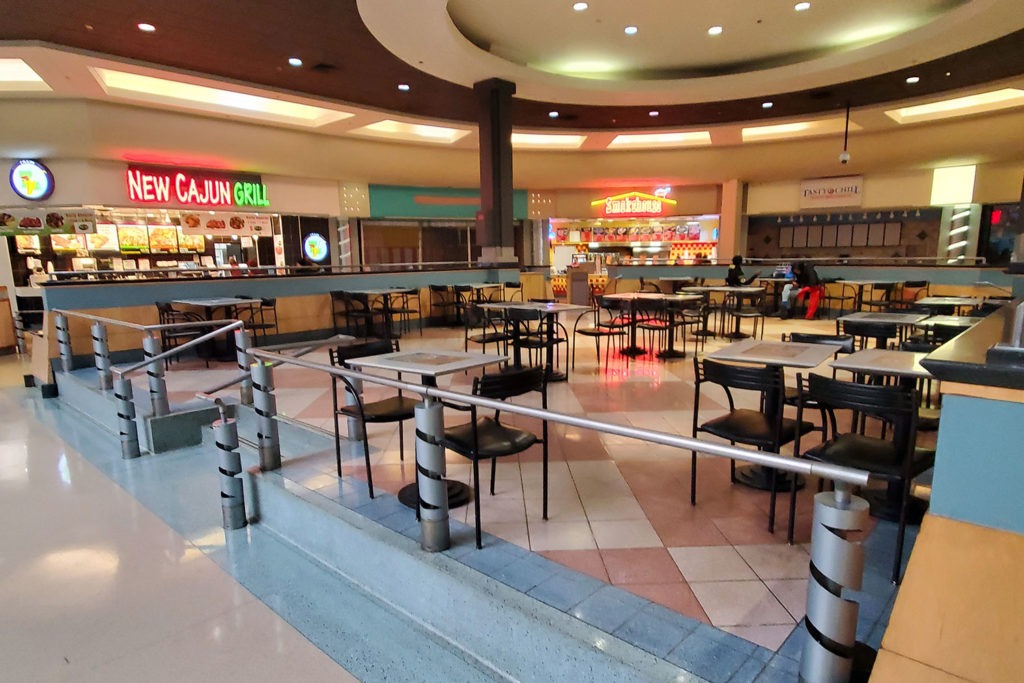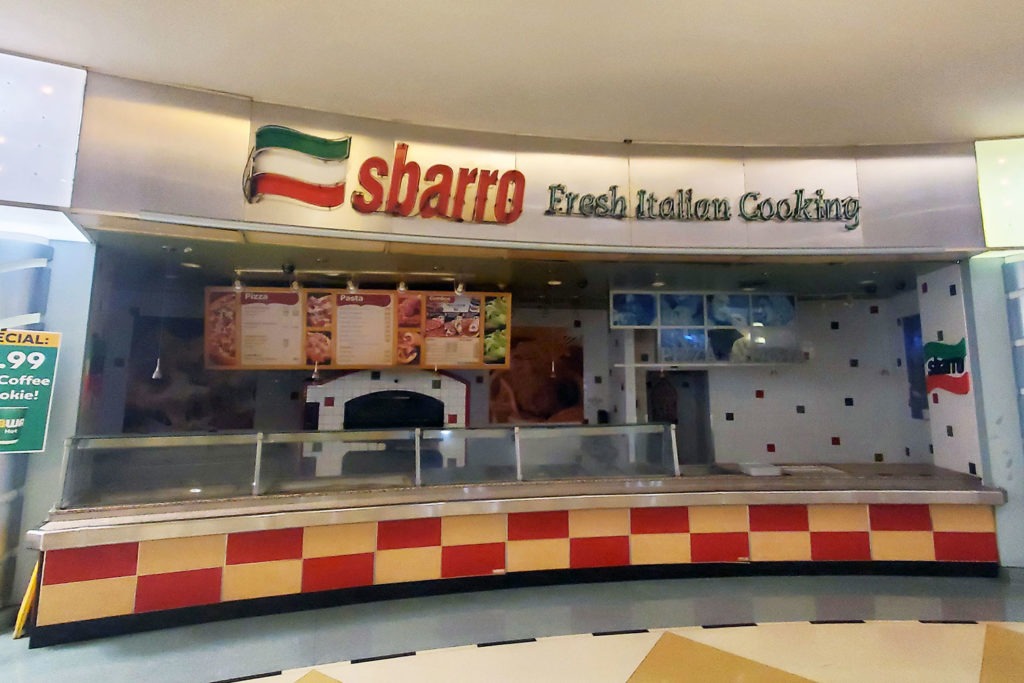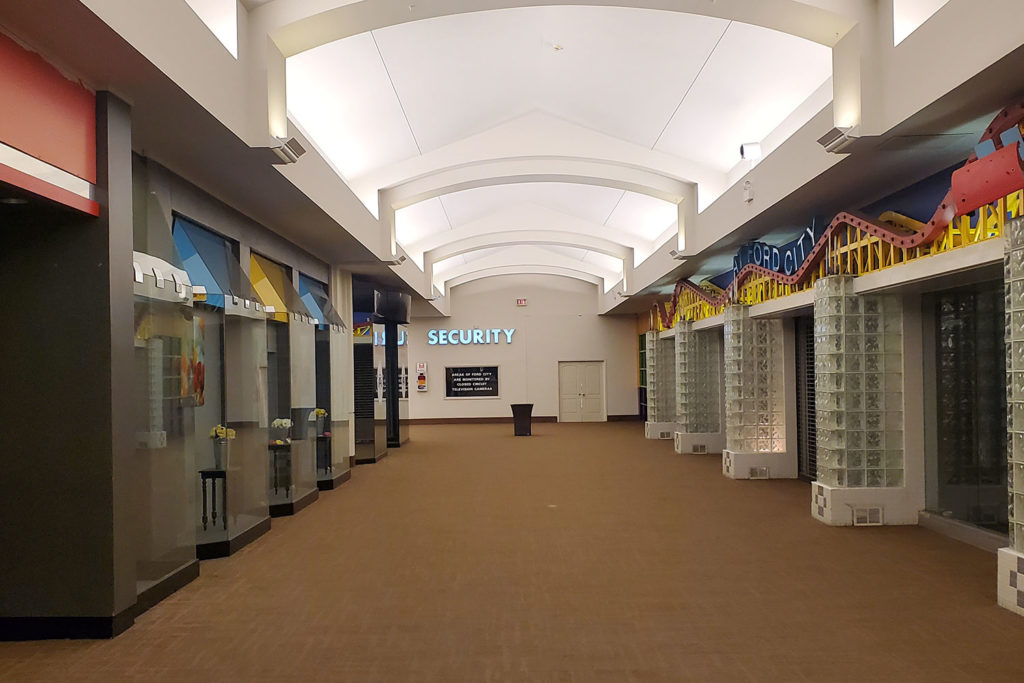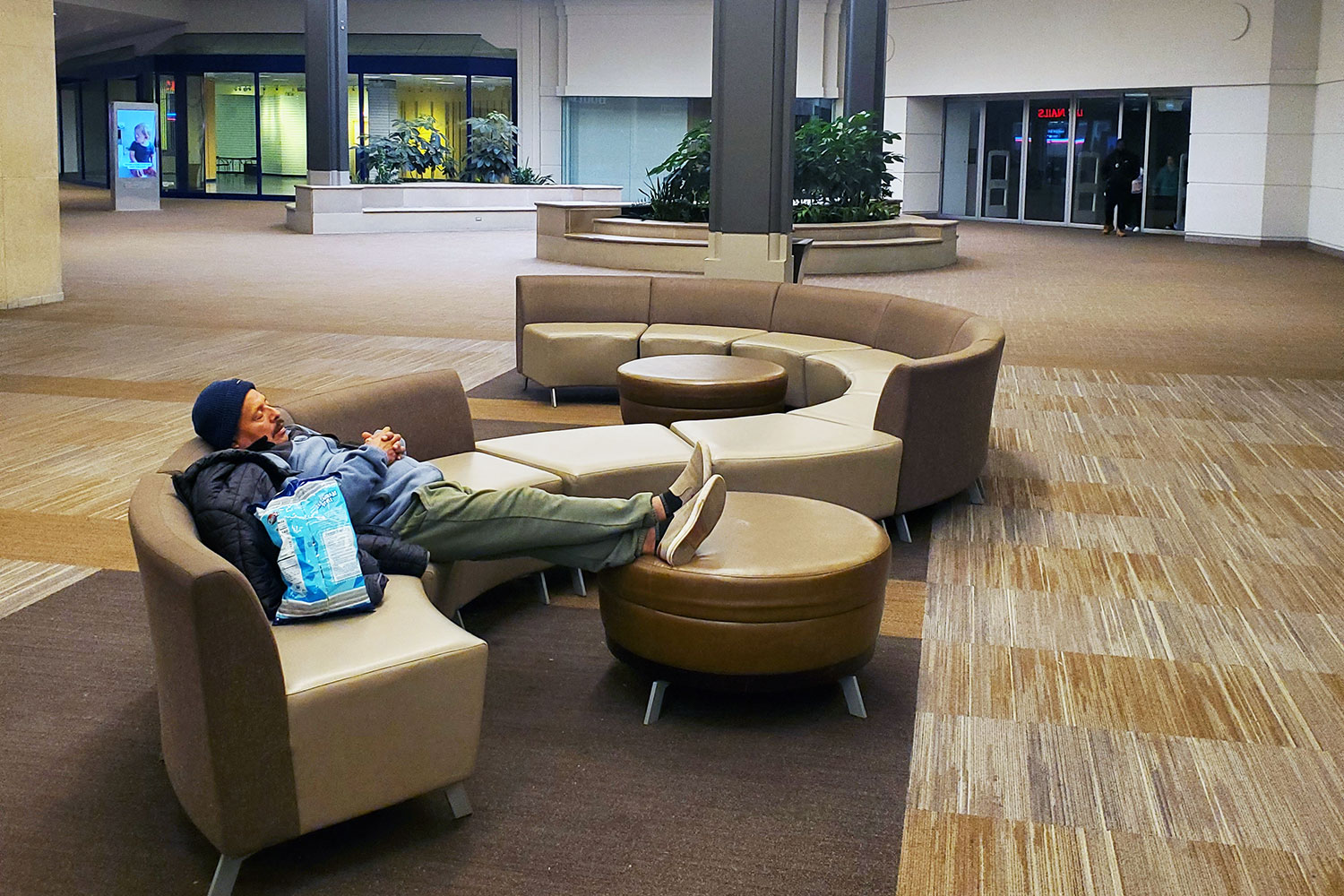There was a snowstorm in the forecast last Friday, but I wanted to get some exercise, so I went to Chicago’s only walkable indoor mall: Ford City.
On a recent episode of his nostalgic podcast, Vanished Chicagoland Stories, Pete Kastanes, who grew up in Ashburn, shared memories of Christmas seasons at the mall: Santa Claus, holiday music, hamburgers at the Woolworth’s grill, that shopping mall staple Orange Julius, and the Peacock Alley bazaar in the basement, which included a Catholic Center, a record store, an art gallery, and a karate school.
“That was a beautiful time,” Kastanes reminisced. “Up until the ’90s. It’s changed. The neighborhood changed. Everyone moved away. I went there a few years ago. It’s cold. It felt bizarre. J.C. Penney is still there. It’s the only store that’s still there since the opening in 1965.”
J.C. Penney has been Ford City’s anchor store since 2018, when Carson Pirie Scott went bankrupt. According to an expert at the University of Connecticut, department store closures have resulted in a “death spiral” for shopping malls: “Once a department store goes vacant that tends to be contagious because all those middle-mall stores — the nail salons and the jewelry stores — they are all depending on the traffic coming from the bigger retail stores.” In the next five years, it is estimated that 25 percent of the nation’s 1,000 malls will close for good.

That retail apocalypse has already hit Ford City, as I found out when I stepped through the abraded archway of Gate 5. It’s as good an example as any of the Great American Shopping Mall in its feeble dotage.
Since it was lunchtime, I started my visit to Ford City at the food court, where — at best — one out of every two stalls is still occupied. In between Smokehouse and New Cajun Grill was a darkened, empty counter, like a burned-out bulb in a neon sign. Next to Subway, Sbarro was closed, although its signage remained. How can a mall still call itself a mall when it’s lost Sbarro? At New Cajun Grill, I got bourbon chicken and red beans and rice for $7.50 — beat that price, “food halls” — and there was plenty of seating for me and the two other lunchtime guests.
Then I embarked on my mall walk. As the expert suggested, there were plenty of nail salons and discount jewelry boutiques, as well as plenty of stores selling baseball caps, jerseys, hoodies, and other sports fan gear. Bath and Body Works was open. So was Victoria’s Secret and Foot Locker. But there were grates pulled over the entrances to Zemsky’s Uniform Store and Illustrious Glam Boutique. A sign hanging from the grate in front of Zales announced “Our Store Is Currently Closed.” The basement, where Pete Kastanes shopped at Peacock Alley, was sealed off, the escalators frozen in a descent to nowhere.
I ventured into the western wing. Once anchored by Carson Pirie Scott, it now felt as desolate as a bus station at midnight. A man napped on a naugahyde couch. I walked and walked (Ford City is a great place to get in 10,000 steps) until I reached a dead end, where a bright red sign glowed for Lee Nails, offering manicures and pedicures.

On my journey back to mid-market retail civilization, I encountered Tom and Brittany Page, a Beverly couple visiting Ford City for the Chinese food. Tom is 57, so he is of the generation — X — that remembers the shopping mall as the nexus of its social and commercial lives.
“There was a time this mall used to be thriving,” Tom said. “They used to have thrills for the kids. Vendors. This really used to be a beautiful mall.”
I asked Tom if he considers Ford City a dead mall, which Urban Dictionary defines as “an enclosed or non-enclosed shopping facility with a high vacancy rate.” It is, he agreed.
“The state of the mall is gonna be dead,” he said. “It’s the change of the world. Online shopping. You can go to your phone and purchase something, and before you know it, it’s at your door.”

Yusuf Fozi, an Ethiopian immigrant who repairs watches at Equal Time, agreed that Amazon is killing the shopping mall, just as surely as video killed the radio star.
“It’s slow,” Fozi said. “The online. The repair part is OK, but the sales slow. For Valentine’s, I used to sell 20, 30 watches. Now, I don’t sell any watches. When I start in 2004, it’s a big difference. The mall was full. Even people who wanted to rent, they had to wait. Now, more than half is empty. To be honest, if the security’s better, people might be more comfortable.”
(In January, two people were wounded during a carjacking attempt in the parking lot. Last fall, a dead body was found behind the AMC 14 movie theater, with an extension cord wrapped around the neck.)
I wish I could bring you more thoughts about the future of Ford City Mall from customers and merchants, but at this point, I was accosted by a security guard, who had seen me taking pictures of storefronts, and escorted to the basement, where the general manager ordered me stop doing journalism in his mall, at least until he could check with the owners in New York. (Ford City is owned by Igal Namdar, a billionaire real estate tycoon whose business model, according to Crain’s Chicago Business, is to snap up distressed malls and “recruit down-market retailers to fill vacancies while holding down costs by limiting debt and capital-improvement spending.” In 2019, Namdar purchased the mall for $16.6 million from iStar Financial, which acquired it in a deed-in-lieu of foreclosure deal from Sam Zell, who paid $75 million for it in 1987, when malls were malls.)
At least I could still keep walking. I completed another lap, then stopped at Ford City’s only open amusement, All-American Target Airsoft Shooting. Hit all the targets with a BB gun, win a keychain or a stuffie. (I didn’t.) The snowstorm never arrived, but the wind and the flurries made the outdoors too raw for a pleasant ramble. We may not shop at malls as much as we used to, but they’re still good for something.



